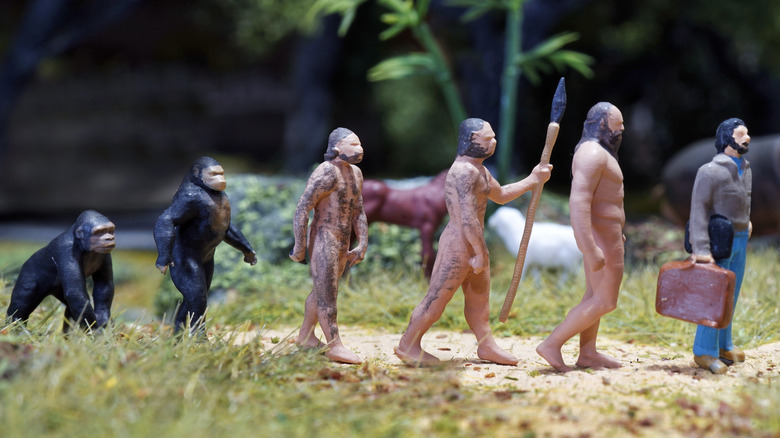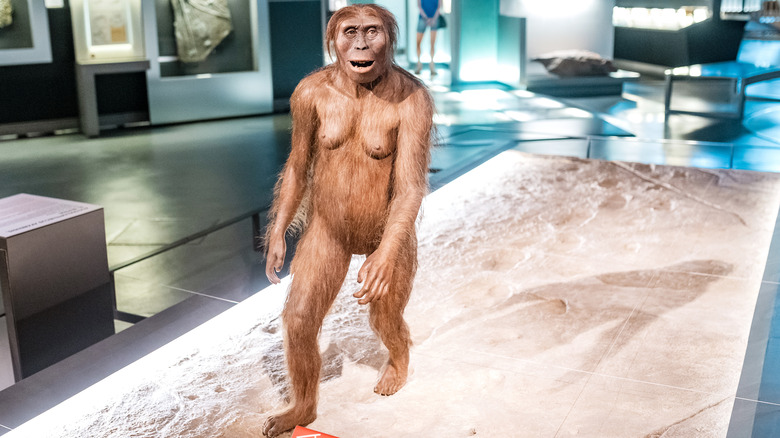The History Of Walking Explained
One of the number one things that distinguishes humans from other animals is our ability to walk on two legs (via The Conversation). Called "bipedalism," this trait gives us the evolutionary advantage of being able to multitask while we walk, using our hands to do tasks and carry objects while we move (via The U.S. Sun). But have you ever wondered when the first people began to walk?
It's hard to give a precise answer to this question, because walking, like other human traits, evolved gradually over time. Moreover, since there are no written records from millions of years ago, scientists can't just read the notes to identify when people started moving around on two feet. Instead, they have to use context clues to identify when bipedalism arose, and when that bipedal movement became similar enough to our modern gaits to be considered walking. By studying the bones of human ancestors, however, scientists can paint a surprisingly detailed picture of how and when animals began walking.
When did people begin to walk?
Most scientists agree that humans began walking at least 4 million years ago, according to The U.S. Sun, with one group of fossils seeming to suggest that people began walking at least 4.4 million years ago (via The Conversation). These fossils, which were discovered in Ethiopia, were identified as bipedal by the shape of their pelvic bones and the structure of their feet. Later, scientists uncovered additional evidence to support the theory of bipedalism millions of years ago, including a series of footprints in Tanzania which dated back 3.6 million years.
However, these animals likely didn't walk quite like we do today, according to Smithsonian Magazine. Instead, their gaits would have combined features of ape and modern human movement (via the Smithsonian National Museum of Natural History), a combination of climbing trees and moving on the ground. It wasn't until around 1.8 million years ago that human ancestors started walking more like we do, when Homo erectus evolved in Africa. This species, which is considered a relatively close ancestor of Homo sapiens, had many physical traits in common with us, like arm and leg size, which allowed them to run and move more or less the way we do today. Now, as humans continue to evolve, it remains to be seen how human bipedalism and walking might continue to change in the future.

